Kaaviya Velumani
Global Wheat Head Dataset 2021: more diversity to improve the benchmarking of wheat head localization methods
Jun 03, 2021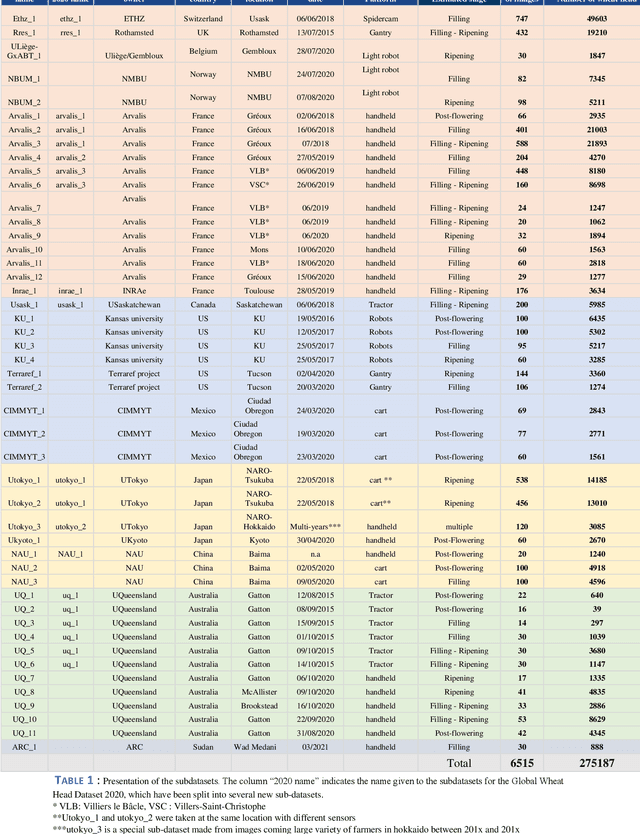
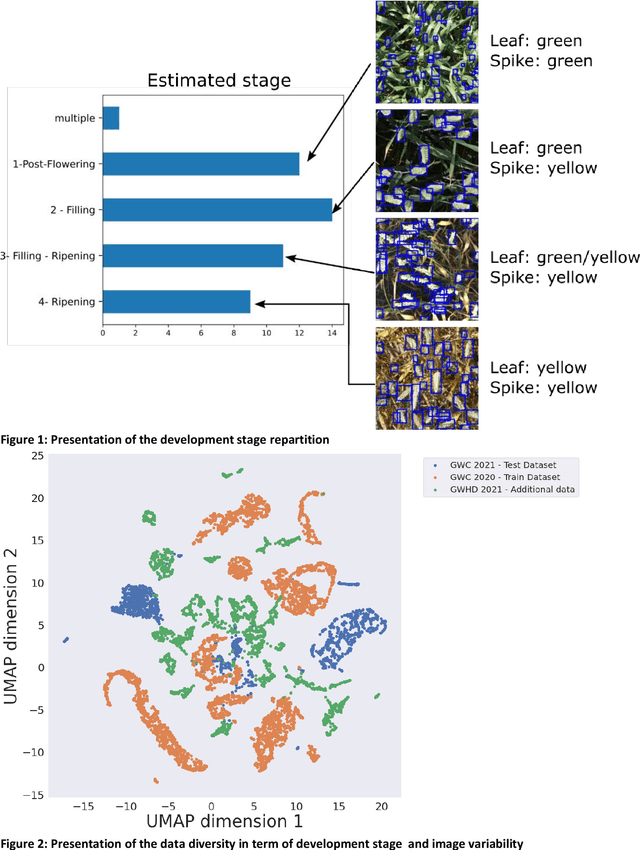
Abstract:The Global Wheat Head Detection (GWHD) dataset was created in 2020 and has assembled 193,634 labelled wheat heads from 4,700 RGB images acquired from various acquisition platforms and 7 countries/institutions. With an associated competition hosted in Kaggle, GWHD has successfully attracted attention from both the computer vision and agricultural science communities. From this first experience in 2020, a few avenues for improvements have been identified, especially from the perspective of data size, head diversity and label reliability. To address these issues, the 2020 dataset has been reexamined, relabeled, and augmented by adding 1,722 images from 5 additional countries, allowing for 81,553 additional wheat heads to be added. We now release a new version of the Global Wheat Head Detection (GWHD) dataset in 2021, which is bigger, more diverse, and less noisy than the 2020 version. The GWHD 2021 is now publicly available at http://www.global-wheat.com/ and a new data challenge has been organized on AIcrowd to make use of this updated dataset.
Estimates of maize plant density from UAV RGB images using Faster-RCNN detection model: impact of the spatial resolution
May 25, 2021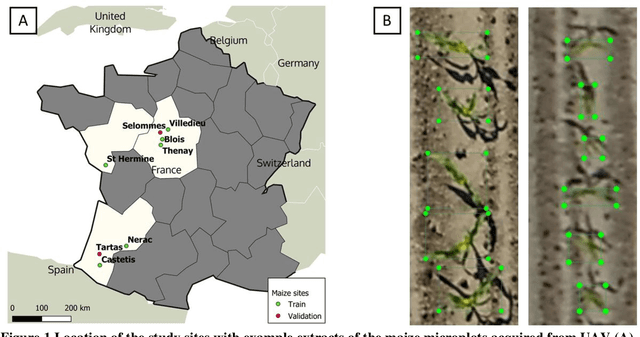
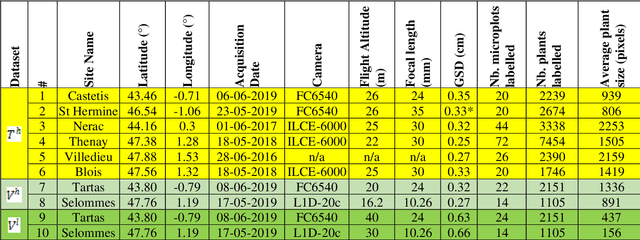
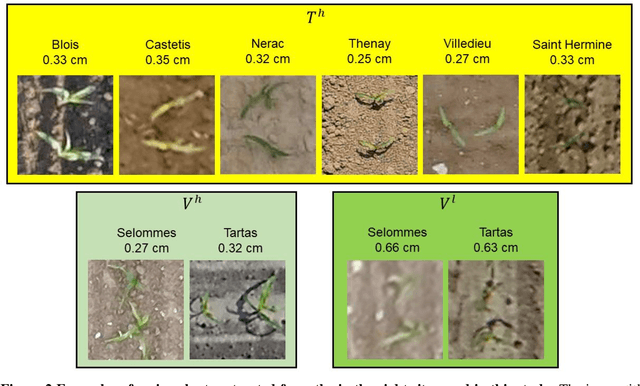
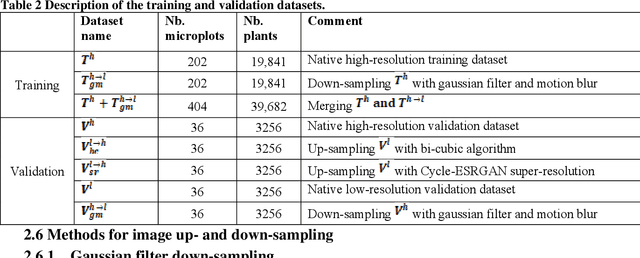
Abstract:Early-stage plant density is an essential trait that determines the fate of a genotype under given environmental conditions and management practices. The use of RGB images taken from UAVs may replace traditional visual counting in fields with improved throughput, accuracy and access to plant localization. However, high-resolution (HR) images are required to detect small plants present at early stages. This study explores the impact of image ground sampling distance (GSD) on the performances of maize plant detection at 3-5 leaves stage using Faster-RCNN. Data collected at HR (GSD=0.3cm) over 6 contrasted sites were used for model training. Two additional sites with images acquired both at high and low (GSD=0.6cm) resolution were used for model evaluation. Results show that Faster-RCNN achieved very good plant detection and counting (rRMSE=0.08) performances when native HR images are used both for training and validation. Similarly, good performances were observed (rRMSE=0.11) when the model is trained over synthetic low-resolution (LR) images obtained by down-sampling the native training HR images, and applied to the synthetic LR validation images. Conversely, poor performances are obtained when the model is trained on a given spatial resolution and applied to another spatial resolution. Training on a mix of HR and LR images allows to get very good performances on the native HR (rRMSE=0.06) and synthetic LR (rRMSE=0.10) images. However, very low performances are still observed over the native LR images (rRMSE=0.48), mainly due to the poor quality of the native LR images. Finally, an advanced super-resolution method based on GAN (generative adversarial network) that introduces additional textural information derived from the native HR images was applied to the native LR validation images. Results show some significant improvement (rRMSE=0.22) compared to bicubic up-sampling approach.
 Add to Chrome
Add to Chrome Add to Firefox
Add to Firefox Add to Edge
Add to Edge